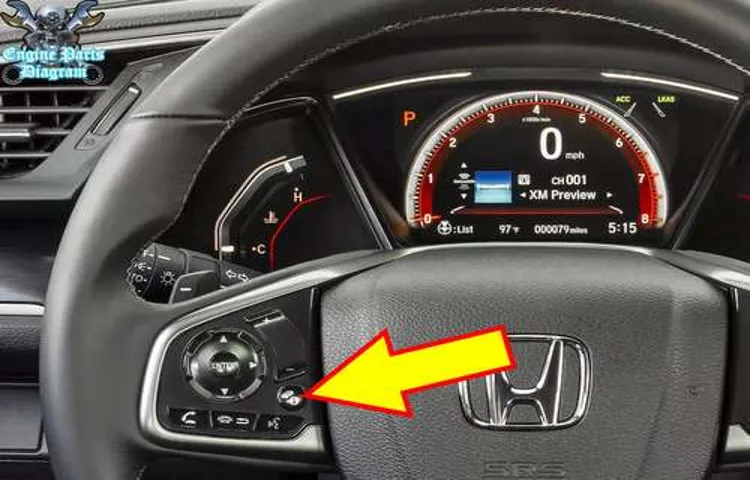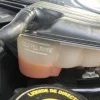Have you ever had that annoying low tire pressure warning light flash on your Honda Civic dashboard? It’s a common issue that can cause confusion and frustration among drivers. But not to worry, resetting low tire pressure on your Honda Civic is a simple process that you can easily complete yourself. In this blog post, we’ll provide you with a step-by-step guide on how to reset the low tire pressure warning on your Honda Civic.
So, buckle up and let’s get started!
Table of Contents
Understanding the Low Tire Pressure Warning System
If you’re driving a Honda Civic, understanding the low tire pressure warning system can save you time and money. This system alerts drivers when one or more tires have low pressure, which can happen due to various reasons such as changes in temperature or punctured tire. To reset the low tire pressure warning on your Honda Civic, start by checking the tire pressure in all four tires.
If one or more tires have low pressure, inflate them to the recommended PSI level indicated in your owner’s manual. Once the tire pressure is adjusted, press and hold the TPMS calibration button until the low tire pressure light blinks twice. This will reset the system and turn off the warning light, indicating that the issue has been resolved.
In case the warning light doesn’t turn off even after inflating the tires, it could indicate a different problem such as a faulty sensor or a leak in the tire. In such situations, it’s best to get your vehicle inspected by a professional mechanic to avoid any potential risks while driving. So, don’t ignore a low tire pressure warning and follow these simple steps to ensure your safety and the longevity of your tires.
What Causes the Low Tire Pressure Warning Light
The low tire pressure warning system is a safety feature in your car that alerts you when your tire pressure is too low. It is essential to understand what causes the low tire pressure warning light to come on so that you can take appropriate action and prevent potential accidents. There are various reasons why the warning light may turn on, such as a punctured tire, a slow leak due to a damaged valve stem, or a malfunctioning sensor.
Driving on underinflated tires can cause uneven wear, reduced fuel economy, and even a blowout. Hence, it is crucial to check your tire pressure regularly and maintain it at the manufacturer-recommended level, which you can find in your car’s manual or on the tire label on the driver’s door jamb. Ignoring the low tire pressure warning light can put you and other drivers at risk, so always take it seriously and get your tires inspected as soon as possible.

How the Low Tire Pressure Warning System Works
The low tire pressure warning system is a safety feature found in most modern cars that detects when one or more of your tires are under-inflated and alerts the driver via a warning light or message on the dashboard. The system works by comparing the tire’s pressure with the recommended pressure listed in the car’s manual or tire placard. If the pressure is too low, the warning system will trigger and inform the driver of the issue.
This is important because driving on under-inflated tires can lead to decreased fuel efficiency, poor handling, and even tire blowouts. It’s important to keep an eye out for the warning light and regularly check your tire pressure to ensure that your car is operating safely and efficiently. By keeping your tires in good condition, you can improve your car’s performance and stay safe on the road.
Resetting Low Tire Pressure on Honda Civic
If you’re a Honda Civic owner and you see your tire pressure warning light turning on, it might be time to reset your low tire pressure. Luckily, it’s a simple process, and you don’t even need any tools or expertise to do it. First, check the recommended tire pressure for your vehicle by looking at the manual or the sticker on the driver’s side doorjamb.
Then, make sure all the tires are inflated to the correct PSI. Once you’ve done that, turn on the ignition and locate the TPMS button on your dashboard. Press and hold it until the low tire pressure light blinks twice, indicating that it’s been reset.
If you had low tire pressure, the warning light should turn off in a few minutes. If it doesn’t, it may be time to consult your local Honda dealer or mechanic. Overall, resetting low tire pressure on your Honda Civic is a simple process that can help ensure your vehicle’s safety and performance on the road.
Check Tire Pressure and Inflate as Needed
When it comes to maintaining your Honda Civic, checking the tire pressure is an important task that you should perform regularly. Low tire pressure can affect your vehicle’s fuel efficiency, handling, and overall safety. To check the tire pressure on your Civic, you will need a tire pressure gauge and a source of air, like an air compressor or a gas station air pump.
Start by removing the valve cap on each tire’s valve stem and pressing the gauge onto the stem. The gauge will give you a reading of the tire pressure in pounds per square inch (PSI). If the pressure is lower than the manufacturer’s recommended level, you will need to inflate the tire to the correct level.
After inflating the tire, it’s important to reset the low tire pressure warning light on your Civic dashboard. This can be done by locating the TPMS button on your instrument panel, holding it down until the warning light blinks twice, and then releasing it. By regularly checking your Honda Civic’s tire pressure and resetting the low tire pressure warning, you can maintain optimal performance, safety, and fuel efficiency while driving on the road.
Locate the TPMS Reset Button
If you’re noticing your Honda Civic’s low tire pressure warning light flashing, it’s time to reset the TPMS by locating the reset button. On most Civics, the reset button is typically found under the dashboard on the driver’s side. To locate it, feel around for a small black rubber or plastic button that’s about the size of a pea.
Once you’ve located it, hold down the button until you hear the TPMS beep. This will reset the system and the low tire pressure warning light should turn off. Remember that TPMS sensors can take up to half an hour or more to recalibrate, so don’t be alarmed if you don’t see results right away.
Keeping your tire pressure at the recommended levels will ensure better performance and fuel economy. So, if you notice your Honda Civic’s TPMS warning light come on again, it’s time to inspect your tire pressure levels and make any necessary adjustments.
Press and Hold the TPMS Reset Button
If you’ve noticed that the low tire pressure light has come on in your Honda Civic, don’t panic! This is a common issue that can easily be resolved. The first step is to locate the TPMS reset button, which is typically found under the dashboard on the driver’s side. Once you’ve found it, press and hold the button until the low tire pressure light starts to blink.
This should take about 10 seconds. After the light blinks, release the button and wait for the light to go off completely. This indicates that the tire pressure has been reset.
It’s important to note that if there is an actual issue with your tires, such as a leak or puncture, resetting the TPMS will not fix the problem. However, if the light comes back on after you’ve reset the TPMS, it might be time to take your car in for a closer look. With this simple guide, you can easily reset low tire pressure on your Honda Civic and get back on the road with confidence!
Alternatives to Resetting Low Tire Pressure on Honda Civic
If you own a Honda Civic and have been dealing with low tire pressure, you may be wondering how to reset it. While a common solution is to simply reset the tire pressure monitoring system through the dashboard controls, there are a few other alternatives to consider. One option is to double check the actual tire pressure with a handheld gauge and fill any low tires to the recommended level.
Another option is to have a professional mechanic inspect the tires for any punctures or leaks that may be causing the low pressure. Finally, if the issue persists despite these efforts, it may be time to replace the tires altogether. By exploring these alternatives, you can ensure safe and efficient driving on the roads with your Honda Civic.
Use a Scan Tool to Reset the System
If you’re experiencing low tire pressure on your Honda Civic, there are alternatives to resetting it. While using a scan tool to reset the system is the most common method, there are other options. First, you can manually inflate the low-pressure tire to the recommended amount.
Secondly, check the sensor for any damage, as this may be causing an incorrect reading. Additionally, make sure the tires are properly aligned and balanced as this can affect the pressure. Lastly, don’t forget to check the spare tire, as it is often forgotten and can also cause a low-pressure alert.
By taking these steps, you can ensure your Honda Civic is safe and running smoothly on the road.
Consult a Honda Dealer or Mechanic
If you’re having issues resetting the low tire pressure on your Honda Civic, the best course of action would be to consult a Honda dealer or mechanic. Sometimes, the problem may not be as simple as pressing a button or inflating the tires to the correct pressure. The issue could be with the tire pressure monitoring system or even the tires themselves.
A professional technician will be able to diagnose and fix the problem correctly. Trying to fix the issue on your own could lead to further complications or even cause damage to your vehicle. It’s always best to trust the experts when it comes to car maintenance and repair.
Make an appointment with your Honda dealer or mechanic today to get your low tire pressure issue resolved and ensure safe driving on the road.
Final Thoughts
In conclusion, resetting the low tire pressure warning on your Honda Civic can be done fairly easily, but it is important to follow the correct steps to ensure that the issue is resolved properly. Firstly, you should check all of your tires for any signs of damage or punctures, and inflate any tires with low pressure to the recommended levels. Once this is done, you can press and hold the tire pressure reset button until the TPMS light blinks a few times, indicating that the system has been reset.
It is important to note that if the TPMS light does not turn off even after the reset, you may have a more serious issue with your tires, and should have them inspected by a professional. By following these steps, you can reset the low tire pressure warning on your Honda Civic and enjoy safe, smooth driving once again. So, next time you see this warning light, don’t panic – just follow these simple steps and get back on the road safely.
Conclusion
And there you have it! Resetting the low tire pressure warning on your Honda Civic is as easy as a few clicks of a button. No need to waste precious time and money heading to the dealership. Just remember to keep your tires properly inflated, as it not only saves you money in the long run, but also ensures a safer, smoother ride.
Now go forth, my tire-smart friends, and enjoy the road ahead with confidence!”
FAQs
What does the low tire pressure indicator light mean in a Honda Civic?
The low tire pressure indicator light means that one or more of the tires in your Honda Civic has low air pressure.
How can I reset the low tire pressure indicator in my Honda Civic?
To reset the low tire pressure indicator in a Honda Civic, press and hold the TPMS (Tire Pressure Monitoring System) button until the indicator light blinks twice.
How often should I check the tire pressure in my Honda Civic?
It is recommended to check the tire pressure in your Honda Civic at least once a month, or before any long distance travel.
What is the proper tire pressure for a Honda Civic?
The proper tire pressure for a Honda Civic can be found in the owner’s manual or on the driver’s side door jamb.
What should I do if the low tire pressure indicator keeps coming on, even after adding air?
If the low tire pressure indicator keeps coming on after adding air, there may be a leak in one of the tires. It is recommended to have the tires checked by a professional mechanic.
Can I drive with the low tire pressure indicator on in my Honda Civic?
It is not recommended to drive with the low tire pressure indicator on in a Honda Civic, as low tire pressure can cause decreased fuel efficiency and tire damage.
How can I prevent low tire pressure in my Honda Civic?
To prevent low tire pressure in a Honda Civic, regularly check the tire pressure, avoid overloading the vehicle, and drive carefully to avoid hitting curbs or other obstacles.



